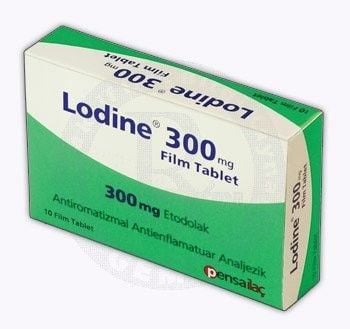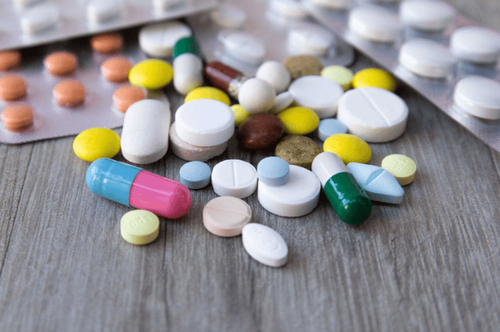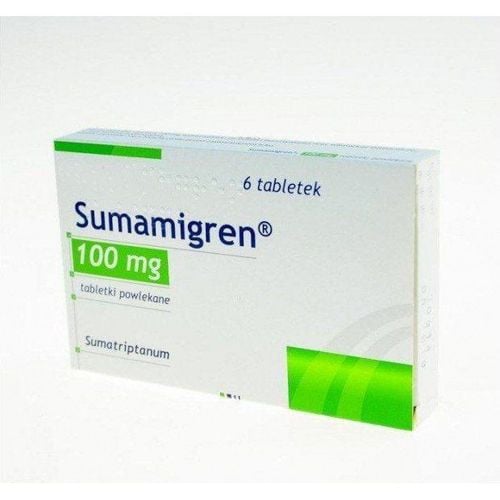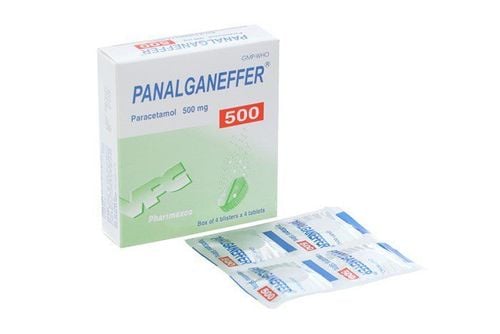This is an automatically translated article.
NSAID is a group of drugs commonly used with effective anti-inflammatory, analgesic, and antipyretic effects. One of the active ingredients of the well-known NSAID group is Meloxicam in Mobic 15mg. What are the uses of Mobic 15mg?
1. What is Mobic 15mg?
Mobic 15mg contains the active ingredient Meloxicam, a non-steroidal anti-inflammatory drug (NSAID). Besides, Mobic meloxicam 15mg drug also includes some excipients such as sodium citrate, lactose monohydrate, microcrystalline cellulose, povidone K25, colloidal anhydrous silica, crospovidone, magnesium stearate.
2. Pharmacological characteristics of Mobic 15mg
2.1. Pharmacodynamics Meloxicam in Mobic 15mg is an active ingredient of the NSAID group, an enolic acid with anti-inflammatory, analgesic and antipyretic effects in animal studies. Meloxicam's mechanism of action is to inhibit the biosynthesis of prostaglandins, a mediator of inflammation. A comparison of the ulcerative and anti-inflammatory effects of meloxicam in arthritic rats showed that the benefit of Mobic 15 mg was superior to that of other NSAIDs, and it inhibited prostaglandins at the inflammatory site more strongly than in the mucosa. stomach or kidneys. The researchers suggest that this difference is related to the ability to selectively inhibit COX-2 instead of COX-1, resulting in a therapeutic effect, inhibition on COX-1 produces side effects on the stomach. thick or kidney.
According to clinical studies, Mobic 15mg or 7.5mg causes less gastrointestinal side effects than other NSAIDs. In addition, the risk of gastric perforation or ulceration and upper gastrointestinal bleeding associated with Mobic 15mg is relatively low and dose dependent.
2.2. Pharmacokinetics Absorption: When used orally, the active ingredient Meloxicam has good absorption, absolute bioavailability is about 90% and there is no difference between dosage forms (such as tablets, oral suspension). and capsules). Absorption Mobic 15mg orally is not affected by food. The maximum plasma concentration of Meloxicam is reached after 5-6 hours;
Distribution: The plasma protein (mainly albumin) binding of Meloxicam is relatively strong. This active substance penetrates well into synovial fluid with a concentration of about 1⁄2 compared to plasma;
Metabolism: Meloxicam in Mobic 15mg is mainly metabolized in the liver;
Elimination: Mobic 15mg is eliminated mainly in the urine and feces to equal extent as metabolites. Only less than 5% of a dose of Mobic 15mg is excreted unchanged in the feces, while very little unchanged in the urine. The half-life is between 13 and 25 hours after oral, intramuscular and intravenous administration.
3. Uses of Mobic 15mg
Mobic Meloxicam 15mg is indicated to relieve symptoms in the following diseases:
Osteoarthritis, joint damage, osteoarthritis; Rheumatoid arthritis ; Ankylosing spondylitis .
4. Dosage of Mobic 15mg
Usual recommended dose of Mobic 15mg:
Osteoarthritis: 7.5mg/day, can be increased to 15mg/day as needed; Rheumatoid Arthritis: 15mg/day, adjusted according to treatment response and may be reduced to 7.5mg/day; Ankylosing spondylitis: 15mg/day, can be adjusted to 7.5mg/day if response to medication; People at high risk of side effects: It is recommended to start at only 7.5mg/day regardless of disease; Patients with severe renal failure undergoing dialysis: Meloxicam dose should not exceed 7.5mg/day. Some notes on the dosage of Mobic 15mg:
The risk of adverse effects increases with the dose and duration of Mobic 15mg, so it is recommended to use only the shortest time and the lowest effective dose; The maximum recommended dose of Meloxicam is 15mg/day; The maximum dose for adolescents is 0.25 mg/kg. In general, this limited population should be used, the total daily dose should be used only once and the tablet should be taken whole with water with a meal.
5. Contraindications of Mobic 15mg
Mobic 15mg drug is contraindicated in the following subjects:
History of allergy to meloxicam or excipients in Mobic 15mg drug; History of hypersensitivity to acetylsalicylic acid and other NSAIDs; People with a history of advanced bronchial asthma, nasal polyps, angioedema or urticaria after taking acetylsalicylic acid or NSAIDs; Analgesia before and after coronary artery bypass graft (CABG) surgery is not indicated. History of recent or progressive peptic ulcer/perforation; Progressive enteritis, including Crohn's disease or ulcerative colitis; Severe liver failure; Severe renal failure not yet on dialysis; Gastrointestinal bleeding, cerebral hemorrhage (recent) or coagulation disorders; Severe heart failure not adequately controlled; Women who are pregnant or breastfeeding; People with genetic diseases are incompatible with excipients of Mobic 15mg; Children under 12 years old.
6. Some warnings and cautions when using Mobic 15mg
Similar to other NSAIDs, patients should be cautious when using Mobic 15mg when they have a history of gastrointestinal disease and are using anticoagulants to treat other medical conditions. Careful monitoring is required in these cases and Mobic 15mg should be discontinued as soon as peptic ulcer or upper gastrointestinal bleeding occurs; NSAIDs, including Mobic 15mg, can cause severe gastrointestinal bleeding, ulceration or perforation, which is potentially fatal. This adverse effect can occur at any time without warning, especially in the elderly; Mobic 15mg and other NSAIDs may increase the risk of serious thromboembolic events, myocardial infarction, and stroke. Therefore, people with a history of cardiovascular disease or with high cardiovascular risk factors have a higher risk; NSAIDs such as Mobic 15mg inhibit the synthesis of prostaglandins in the kidney, a substance that helps maintain renal perfusion. Therefore, when used in humans, hypovolemia and decreased renal blood flow may decompensate renal function. However, this condition will quickly return to the way it was if the NSAID is stopped; Mobic 15mg, although rare, can cause interstitial nephritis, glomerulonephritis, renal parenchymal necrosis or nephrotic syndrome; The dose of Mobic 15mg in people with end stage renal failure on dialysis should not exceed 7.5mg. In addition, no dose adjustment of Meloxicam is required for patients with mild or moderate renal impairment (creatinine clearance above 25 mL/min); Mobic 15mg may cause an increase in liver enzymes or a transient decline in liver function. If the liver abnormalities are severe or persistent, the patient should stop taking Mobic 15mg and perform a follow-up test; There is no need to reduce the dose of Meloxicam for patients with clinically stable cirrhosis; Special caution should be exercised when using Mobic 15mg for the elderly because of the risk of liver failure, kidney failure or heart failure; Mobic 15mg may cause salt, potassium and water retention in addition to inhibiting the diuretic effect on stimulating urinary sodium excretion. Therefore, patients with heart failure or hypertension may be more severe when taking Mobic 15mg, so these patients should be closely monitored clinically; Mobic 15mg, similar to other NSAIDs, has anti-inflammatory effects, so it can obscure the manifestations of infection; Use of Mobic 15mg and cyclooxygenase/prostaglandin synthesis inhibitors may negatively affect fertility. Therefore, it is not recommended for use in women planning to become pregnant.
7. Undesirable effects of Mobic 15mg
Abnormal results of complete blood cell analysis, leukopenia, thrombocytopenia, anemia, especially when used concomitantly with myelotoxic drugs (such as methotrexate); Anaphylaxis, anaphylactic-like symptoms and other immediate hypersensitivity reactions; Mobic 15mg can cause confusion, disorientation, mood changes; dizziness, drowsiness, headache; Visual disturbances such as blurred vision, conjunctivitis; Dizziness, tinnitus; heart palpitations; increased blood pressure, hot or flushed face; Asthma in people allergic to aspirin or other NSAIDs; Gastrointestinal perforation, microscopic or gross gastrointestinal bleeding, peptic ulcer, colitis, gastritis, esophagitis, stomatitis; Abdominal pain, digestive disorders, diarrhea, nausea, vomiting, constipation, flatulence, belching; Hepatitis, abnormal liver function tests (elevated transaminases or bilirubin); Acute renal failure, abnormal renal function tests (eg, increased creatinine and/or blood urea), acute urinary retention; Edema at the injection site.
8. Drug interactions of Mobic 15mg
Other prostaglandin synthesis inhibitors (including glucocorticoids and salicylates): Combination with Mobic 15mg is not recommended due to the high risk of ulceration and gastrointestinal bleeding. In addition, concomitant use of Mobic 15mg with other NSAIDs is not recommended; Oral anticoagulants, systemic heparin, fibrinolytics combined with Mobic 15mg increase the risk of bleeding; Antiplatelet agents and selective serotonin reuptake inhibitors (SSRIs) increase the bleeding potential of Mobic 15mg by inhibiting platelet function; Lithium: NSAIDs such as Mobic 15mg can increase plasma lithium concentrations and lead to toxicity. Therefore, this combination is not recommended, if necessary, careful plasma lithium concentration monitoring is required; Methotrexate in combination with Mobic 15mg can reduce renal elimination and increase blood levels of Methotrexate. Therefore, it is not recommended to use Methotrexate concomitantly with Mobic 15mg and other NSAIDs; Diuretics when combined with NSAIDs such as Mobic 15mg increases the risk of acute renal failure in people who are dehydrated. Therefore, when combining these two drugs, it is necessary to supplement the patient with adequate water and monitor renal function periodically; Antihypertensive drugs (beta blockers, ACE inhibitors, vasodilators, diuretics): Mobic 15mg reduces blood pressure lowering effect due to prostaglandin inhibition; NSAIDs such as Mobic 15mg in combination with angiotensin II receptor blockers/ACE inhibitors provide a synergistic effect on reducing glomerular filtration rate and increasing the risk of acute renal failure; Cholestyramine binds to Mobic 15mg while still in the gastrointestinal tract, thereby leading to increased elimination of Meloxicam; Nonsteroidal anti-inflammatory drugs increase the nephrotoxicity of Cyclosporin, so it is necessary to check renal function when combining Mobic 15mg with Cyclosporin; Meloxicam is eliminated almost entirely after hepatic metabolism, approximately 2⁄3 mediated by cytochrome P450 enzymes and 1⁄3 by other metabolic pathways. Therefore, there is still a risk of pharmacokinetic interactions when Mobic 15mg is used in combination with drugs that are inhibited or metabolised by CYP 2C9 and/or CYP3A4. Mobic 15mg contains the active ingredient Meloxicam, a non-steroidal anti-inflammatory drug (NSAID). The drug is indicated for the treatment of osteoarthritis. To ensure the effectiveness of treatment and avoid side effects, patients need to strictly follow the instructions of the consulting doctor.
Follow Vinmec International General Hospital website to get more health, nutrition and beauty information to protect the health of yourself and your loved ones in your family.
Please dial HOTLINE for more information or register for an appointment HERE. Download MyVinmec app to make appointments faster and to manage your bookings easily.













